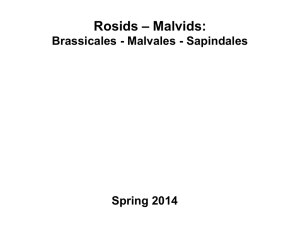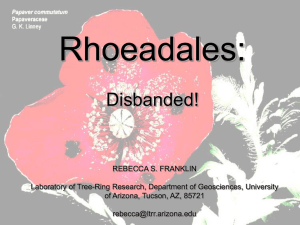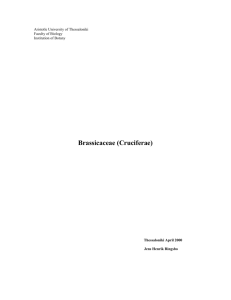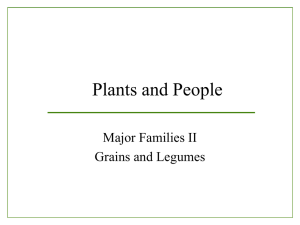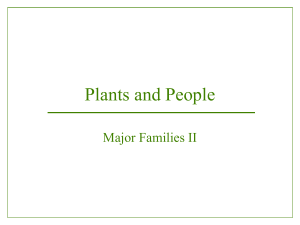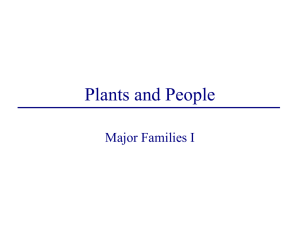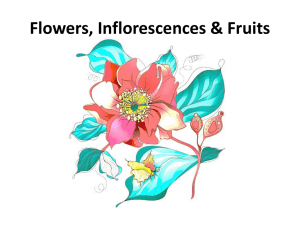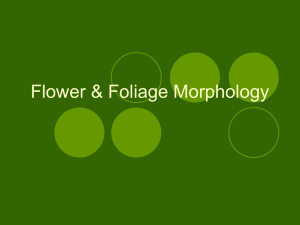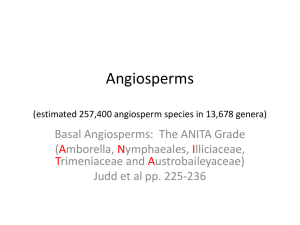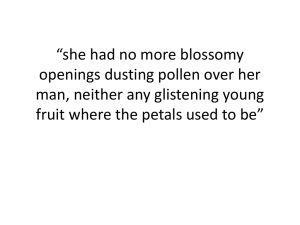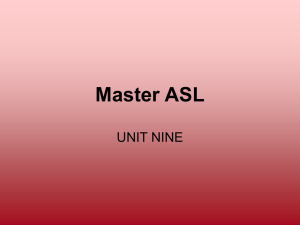Life Form
advertisement
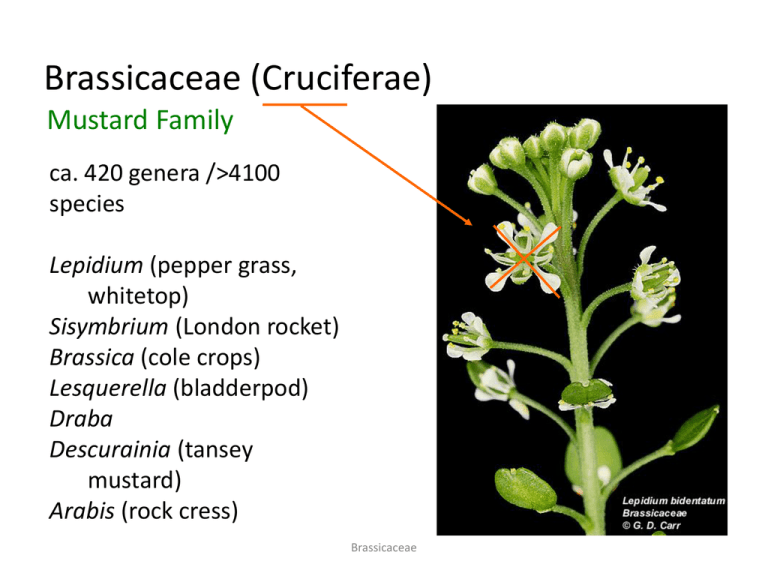
Brassicaceae (Cruciferae) Mustard Family ca. 420 genera />4100 species Lepidium (pepper grass, whitetop) Sisymbrium (London rocket) Brassica (cole crops) Lesquerella (bladderpod) Draba Descurainia (tansey mustard) Arabis (rock cress) Brassicaceae Life Form Flowers and Inflorescence Plants usually herbaceous, sometimes woody. Flowers bisexual and mostly regular. Inflorescence typically a raceme. Stems and Leaves Leaves alternate, simple or divided. Major leaves often in basal rosette. Reproductive Structures Perianth Six stamens, usually with four long and two short filaments. Superior ovary on prolonged receptacle (gynophore); two carpels that form two-chambered capsule-like fruit with persistent central divider Four distinct sepals and petals. Petals have claw at base and form cross when fully open. Fruit Silique, silicle or capsule. Brassicaceae Life Form Flowers and Inflorescence Plants usually herbaceous, sometimes woody. Flowers bisexual and mostly regular. Inflorescence typically a raceme. Stems and Leaves Leaves alternate, simple or divided. Major leaves often in basal rosette. Reproductive Structures Perianth Six stamens, usually with four long and two short filaments. Superior ovary on prolonged receptacle (gynophore); two carpels that form two-chambered capsule-like fruit with persistent central divider Four distinct sepals and petals. Petals have claw at base and form cross when fully open. Fruit Silique, silicle or capsule. Brassicaceae Major leaves in basal rosette (Arabidopsis sp.) Life Form Flowers and Inflorescence Plants usually herbaceous, sometimes woody. Flowers bisexual and mostly regular. Inflorescence typically a raceme. Stems and Leaves Leaves alternate, simple or divided. Major leaves often in basal rosette. Reproductive Structures Perianth Six stamens, usually with four long and two short filaments. Superior ovary on prolonged receptacle (gynophore); two carpels that form two-chambered capsule-like fruit with persistent central divider Four distinct sepals and petals. Petals have claw at base and form cross when fully open. Fruit Silique, silicle or capsule. Brassicaceae 4 + 2 stamens “claw” Cruciform Gynophore Eurosids II & Euasterids I Brassicaceae 6 Lesquerella graclis Brassicaceae Brassicaceae Life Form Flowers and Inflorescence Plants usually herbaceous, sometimes woody. Flowers bisexual and mostly regular. Inflorescence typically a raceme. Stems and Leaves Leaves alternate, simple or divided. Major leaves often in basal rosette. Reproductive Structures Perianth Six stamens, usually with four long and two short filaments. Superior ovary on prolonged receptacle (gynophore); two carpels that form two-chambered capsule-like fruit with persistent central divider Four distinct sepals and petals. Petals have claw at base and form cross when fully open. Fruit Silique, silicle or capsule. Brassicaceae 4 + 2 stamens “claw” Cruciform Gynophore Eurosids II & Euasterids I Brassicaceae 10 Life Form Flowers and Inflorescence Plants usually herbaceous, sometimes woody. Flowers bisexual and mostly regular. Inflorescence typically a raceme. Stems and Leaves Leaves alternate, simple or divided. Major leaves often in basal rosette. Reproductive Structures Perianth Six stamens, usually with four long and two short filaments. Superior ovary on prolonged receptacle (gynophore); two carpels that form two-chambered capsule-like fruit with persistent central divider Four distinct sepals and petals. Petals have claw at base and form cross when fully open. Fruit Silique, silicle or capsule. Brassicaceae Raphanus sativus Silique Dry, dehiscent fruit of Brassicaceae with two valves separating from the placentae and septum (replum) Eurosids II & Euasterids I Brassicaceae Siliques Silicles Less than twice as long as is wide Brassicaceae Brassicaceae Lesquerella montana Brassicaceae Sisymbrium irio Brassicaceae
